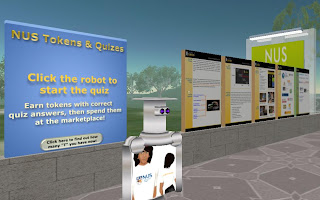With all the hype around the concept of Metaverse, it is no wonder that more companies are developing apps to connect users to a metaverse of their own creation. The latest is Bondee, which has ranked top among the free apps chart on Google Pay with more than a million downloads since the launch on 15th Jan 2023. It is developed by Metadream Tech, a Singapore based company.
 |
| Bondee Screenshot - New User |
Bondee allows you to connect with friends, chat, and visit each other's rooms in a neighborhood setting. Signing up is pretty easy and the usual process of ID creation is smooth. They do need birthday details, and officially only those who are 13 and above of age could create an account. Providing a phone number would also make it easier for your friends to locate you and "add friend" to their accounts. There is a two step verification via SMS to ensure that the phone number is indeed linked to your mobile phone.

After registration, it is time to create your customised avatar! There are plenty of options (hairstyle, accessories, clothes etc) and if a step-by-step process of tweaking every detail is too tedious for you, you could always choose one of those pre-setup options as a base to simplify the avatar customisation process. After that, it is time to add some friends! You could share your own Bondee QR codes or IDs via chats, and I've shared mine on Instagram, to make it easier for friends to find me.
There are two nice features of Bondee (at least to me), and one of them is the ability to decorate your own room. Similar to the avatar creation, there are also two more options to pre-fill a room in a certain style to speed up the process. Many of the items are marked as "Limited Free Trial" and I wonder how much would they cost (eventually) to own them. Or, having selected them now, would they be taken away past this time period? There is also an option to add / customise the items using your own photos, which is a nice touch beyond just cartoony furniture.
Once the room is set up, you could view your room in the neighbourhood setup in an isometric style. You could visit your friends' room and leave post-it notes on their walls too.
The other fun feature is a sailing option although I'm not sure what is the background story to such a 'sea sailing' feature. Upon sailing in the small boat, the user could meet other users or even pick up bottles with notes inside. Thus far I've only met 1 other Bondee user while I was sailing.
Besides these two features, the normal functions of the Bondee app as far as I can see, is to chat with friends via both a personal chat, as well as group chat. You could also indicate your current status via a number of options e.g. charging up, sleeping, chilling, playing with sparklers etc.
I guess these apps would be attractive when more and more friends use it - currently I have less than 10 friends on Bondee, and maybe I could add more in the coming days (current max of 50)! Bondee have yet to add Paid features but I guess that would be inevitable at some point.










































